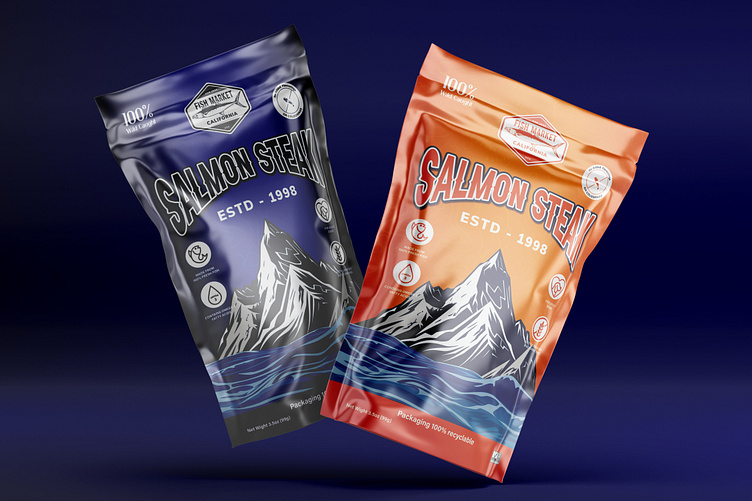SALMON FOOD POUCH PACKAGING DESIGN
What Is Salmon?
Salmon -- that tender, pink, firm fish -- is one of the most popular fish choices in America thanks in part to its rich, buttery flavor.
And that's a good thing for your health.
You can choose from a handful of different Pacific salmon, including:
Sockeye
Pink
Coho
King (Chinook)
Many of these come from the wild.
Atlantic salmon is also an option. The U.S. prohibits fishing for it, so the ones you’ll find in American supermarkets are farm-raised.
Salmon Risks
Although it offers many health benefits, there are some health risks of eating salmon, especially in large amounts. In some cases, it can cause:
Bleeding problems. For all of the health benefits of omega-3s, high doses of them, like in supplements, can cause bleeding problems if you take some anticoagulant drugs. So make sure you stay within the guidelines above. Fish oil is a natural anticoagulant, which means that it acts as a blood thinner. High doses (more than 3 grams a day) of omega-3 fatty acids can cause bleeding problems if taken with medications to prevent blood clots.
Disease. Persistent organic pollutants (POPs) are linked to an increased risk of type 2 diabetes and obesity, as well as other diseases. One kind of POP -- polychlorinated biphenyls, or PCBs -- can be found in salmon. However, its levels are five to 10 times higher in farmed fish than in wild fish.
What Are Salmon Eggs?
Salmon roe are the developed eggs of salmon. Salmon eggs are red-orange in color and are taken from the inside of the fish. Eating fish roe provides many of the same healthy vitamins and minerals as eating fish meat.
Fish roe, research shows, may help with improving or preventing the following health conditions:
Depression
Inflammation
Heart disease
Rheumatoid Arthritis


